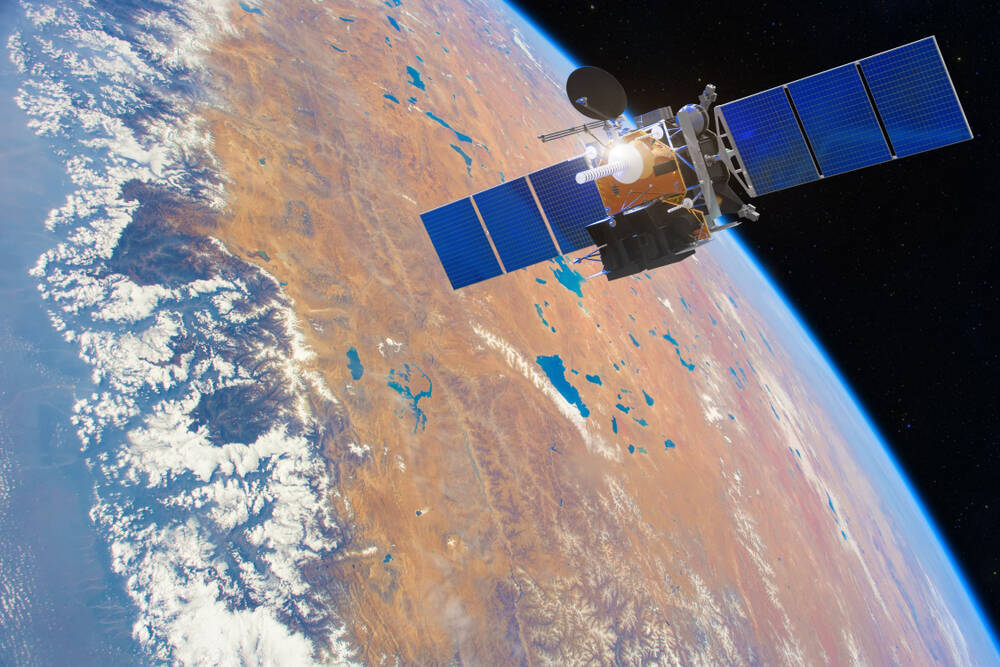Electric propulsion systems that generate power from the scant air in the outer edges of the atmosphere could power satellites in very low Earth orbit (VLEO), without the need for conventional propellants – at least in theory.
Armed with $400,000 funding from DARPA, boffins from the Department of Energy’s Princeton Plasma Physics Laboratory (PPPL) and academics from the George Washington University (GWU) are building prototypes for the technology.
A satellite’s lifetime is usually determined by the amount of fuel it carries, because they need to fire thrusters to stay in orbit. Once sats run out of juice to counteract gravity they fall into the atmosphere and burn up (or occasionally fall to Earth).
Enter “air-breathing electric propulsion” (ABEP) – a system whereby the satellite gases up on the go using the very air through which it flies. The way it works is simple: a device aboard a VLEO satellite sucks in air from the upper atmosphere and funnels particles into an ionization chamber to create plasma. The resulting charged particles can be accelerated outwards to propel the spacecraft.
Such systems, however, only work in very low Earth orbit at altitudes of 100 kilometers – where there is still enough of a faint atmosphere to collect air.
“There is air available at VLEOs. So, instead of launching rockets with these propellants – such as xenon, krypton or argon – we can use what is naturally available: air,” explained Yevgeny Raitses, a managing principal research physicist at PPPL, which is leading the project. “This should allow us to reduce the mass of satellites or allow them to dedicate the difference in mass to other aspects of the device. It might also extend the lifetime of the device.”
Michael Keidar, a GWU professor who runs a micropropulsion and nanotechnology lab and is working on this project, has previously written: “In addition to payload benefits, these altitudes are uncrowded, provide fast orbit decay to maintain the environment, resilience from difficult-to-propagate orbit dynamics, and provide the propellant – air – for air-breathing propulsion options.
Building APEB engines is tricky. The burst of ions ejected from the satellite to generate kinetic energy must be carefully managed. “It is important in order to avoid charging the satellites,” Raitses added. If a craft becomes electrically charged, it could potentially attract the outgoing ions back to the engine – and cause the sat to jerk backwards instead of moving forwards.
Researchers at the federal lab and GWU are currently trying to effectively neutralize outgoing ions, while creating enough thrust. Raitses and his colleagues will analyze the density and temperature of the plasma, and velocities of positive ions. These measurements will be compared against model simulations.
The idea of ABEP technologies has obviously piqued the interest of space agencies. The European Space Agency, for example, has explored the technology for years. In 2018, engineers built a prototype that managed to turn air molecules into propellant, with the goal of eventually designing a system that could fly at 200km altitude at a speed of about 7.8 kilometers per second.
“This result means air-breathing electric propulsion is no longer simply a theory but a tangible, working concept, ready to be developed, to serve one day as the basis of a new class of missions,” ESA aerothermodynamics engineer Louis Walpot declared at the time. Nearly six years later, the technology isn’t close to being deployed on real satellites – but researchers may be getting closer. ®

Dr. Thomas Hughes is a UK-based scientist and science communicator who makes complex topics accessible to readers. His articles explore breakthroughs in various scientific disciplines, from space exploration to cutting-edge research.








